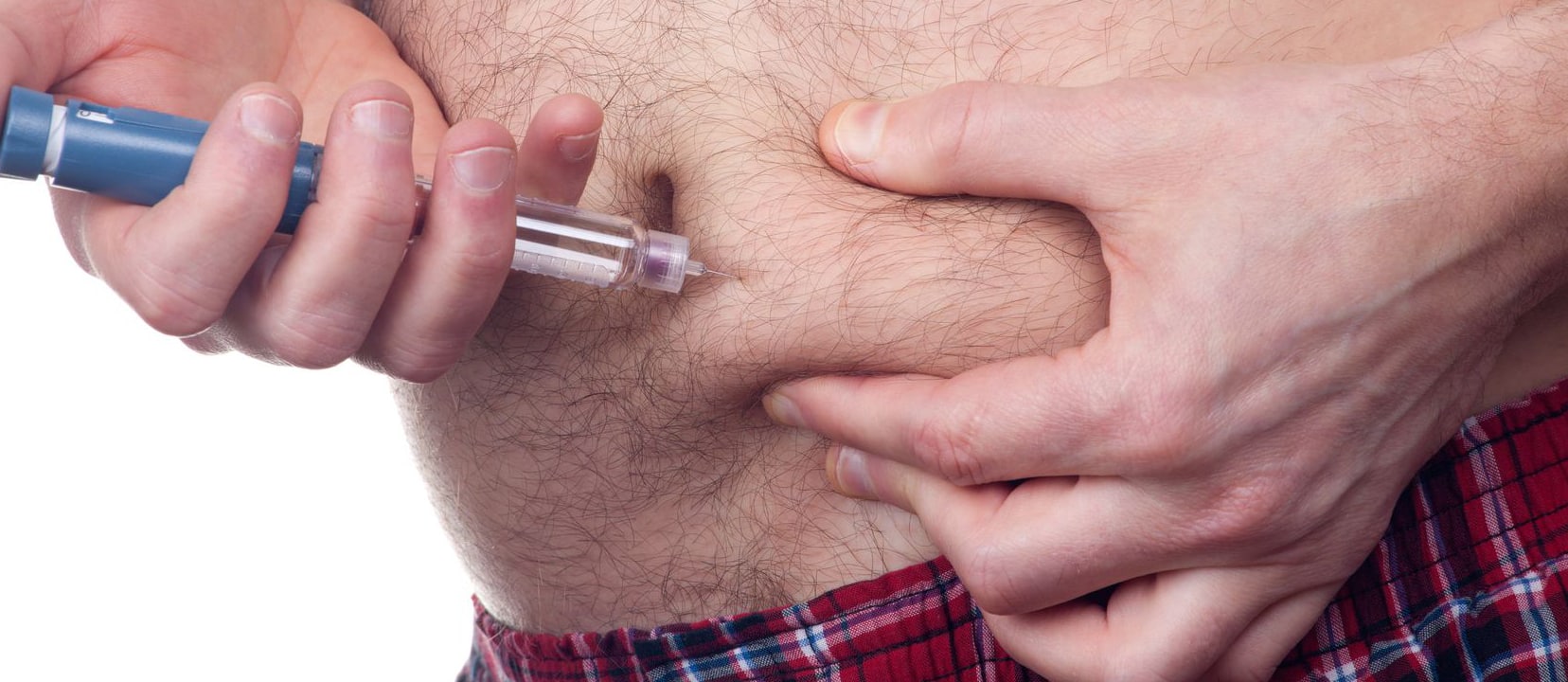Free fatty acids (meaning fat circulating in the bloodstream not packaged into triglycerides) result in inflammation, toxic fat breakdown products, and oxidative stress, which can gum up the insulin receptor pathway and lead to insulin resistance in our muscles. Insulin resistance is what causes prediabetes and type 2 diabetes. I explain the process in my video What Causes Insulin Resistance? As the level of fat in the blood rises, the body’s ability to clear sugar from the blood drops dramatically.
Where does this fat in our blood that’s wreaking all this havoc come from? It comes from the fat that we eat and from the fat that we wear.
The number of fat cells we have stays constant in adulthood. The way researchers figured that out is by measuring the amount of radioactive carbon still trapped in our DNA from all the nuclear bomb tests. After massive weight loss, our fat cells shrink as they offload fat, but the number stays the same. Conversely, when we gain weight, our fat cells stretch as we pack more and more into each individual fat cell. So, when our belly, butt, or thighs get big, we’re not adding more fat cells, we’re just cramming more fat into each cell. At a certain point, our cells become so bloated that they spill fat back into the bloodstream.
This is called the spillover effect. Not only does an obese person have more fat, but they’re constantly spilling that fat into their bloodstream. So, that could be the link between obesity and diabetes. Fat is spilling out from our fat cells and gets lodged in our muscle cells, leading to the insulin resistance that promotes the onset of type 2 diabetes. I show this in my video The Spillover Effect Links Obesity to Diabetes.
The fat can also enter our bloodstream through our mouths. If you put people on a low-carb diet, fat builds up in their muscles within two hours and insulin sensitivity drops. And the more fat found in the muscles, the lower the ability to clear sugar from the blood. It doesn’t take years for this to happen, just hours after fatty foods go into our mouths. A fat-rich diet can increase fat in the blood, and this increase is accompanied by a decrease in insulin sensitivity.
Studies clearly demonstrate that fat in the blood directly inhibits glucose transport and usage in our muscles, which is responsible for clearing about 85% of the glucose out of the blood. These findings indicate that fat consumption can play an important role in the development of insulin resistance.
Normally, we only have 10 to 50 micromoles of free fat floating around in our blood stream at any one time, but those who are obese have between 60 to 80. But, we can reach 80 just eating a high fat diet. So, a skinny person eating a low-carb diet can have the same level of fat in their blood that obese people do. Similarly, being obese is like eating some horrible bacon and butter diet all day, because obese persons are constantly spilling fat into their bloodstream, no matter what goes in their mouths.
Are all types of fat the same? Find out the answer in my video Lipotoxicity: How Saturated Fat Raises Blood Sugar.
The fat leaking into our bloodstream may also contain fat-soluble pollutants that accumulated from our diet: Pollutants in Salmon and Our Own Fat.
The spillover effect may also help explain the increased heart disease risk associated with obesity: Low Carb Diets and Coronary Blood Flow.
In health,
Michael Greger, M.D.
PS: If you haven’t yet, you can subscribe to my free videos here and watch my live, year-in-review presentations:
- 2012: Uprooting the Leading Causes of Death
- 2013: More Than an Apple a Day
- 2014: From Table to Able: Combating Disabling Diseases with Food
- 2015: Food as Medicine: Preventing and Treating the Most Dreaded Diseases with Diet
- 2016: How Not To Die: The Role of Diet in Preventing, Arresting, and Reversing Our Top 15 Killers
